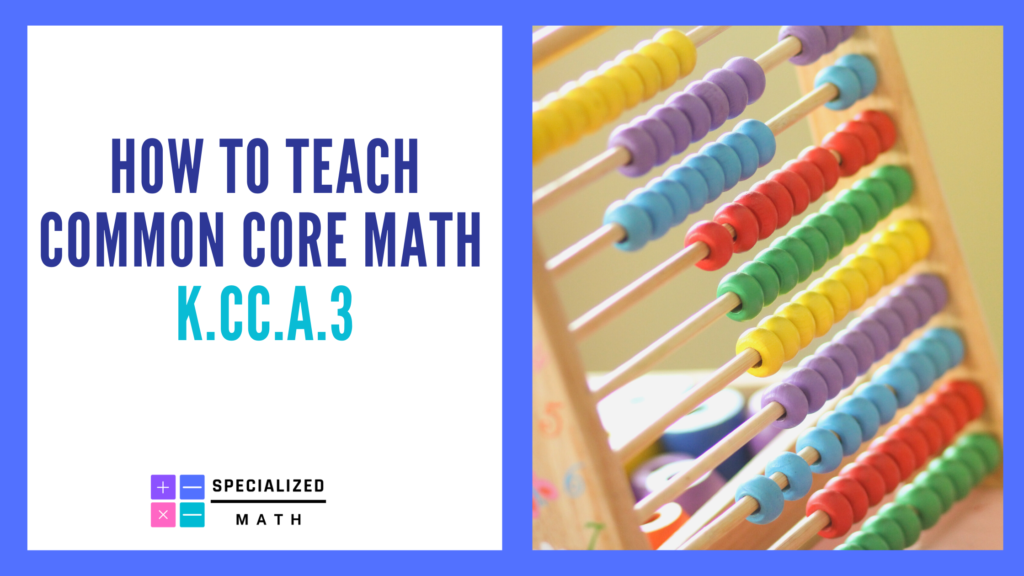K.CC.A.3 is a part of the major cluster Know Number Names and the Count Sequence (K.CC.A). K.CC.A is a major cluster, which means that it is important to focus attention here as major work represents 65 to 80 percent of the grade level content. Below I will break down the focus of each standard as well as the common misconceptions, prerequisite knowledge, vocabulary, and strategies to support students with disabilities.
What does the standard say?
K.CC.A.3 states that students should Write numbers from 0 to 20. Represent a number of objects with a written numeral 0-20, with 0 representing a count of no objects.
About K.CC.A.3
One way students can learn the left to right orientation of numbers is to use a finger to write sky write, on their knee, arm, or hands, or on a partner’s back. Children will see mathematics as something that is alive and that they are involved. This will especially meet the needs of kinesthetic learners.
Students should study and write numbers 0 to 20 in this order: numbers 1 to 9, the number 0, then numbers 10 to 20. They need to know that 0 is the number of items left after all items in a set are taken away. Do not accept “none” as the answer to “How many items are left?” for this situation.
Common Misconceptions for K.CC.A.3
When teaching K.CC.A3, we should consider that when writing numerals, it is not uncommon for students to write reversals. Students often write an E for a 3. Confusing a 6 and 9 is also a common error. Asking students to sky write numbers in the air, may reinforce the correct direction.
Prerequisite Skills
Use a writing tool to reproduce or trace a given shape
Vocabulary
number, numeral, number names zero to twenty, count, represent, write
Strategies to Support Students with Disabilities
●Write/reproduce numerals in the air, in sand, in clay, on whiteboards, etc.
●Use the calculator for numeral recognition and to develop familiarity with numerals
●Practice writing the numerals from 0 to 20 in sequential and random order after teacher modeling
●Move between number names, numerals, and pictured sets
●Identify a number between 1 and 20 on a number line or hundreds chart, then reproduce that number
●Lead the class to count the objects in a set, then instruct the students to write the number of objects counted
●Have student roll a dot or number die and then record the number on paper (roll and write)

